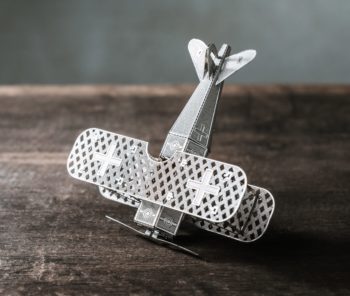When it comes to exhibiting at a trade show, a well-designed booth that effectively supports show objectives and in-booth activities is a critical foundation for an impactful exhibit environment. Meeting these requirements takes careful planning, as well as a team of creative experts who understand both the objectives of face-to-face marketing and how to avoid pitfalls of exhibit design.
To ensure a custom trade show exhibit design is as impactful and successful as possible, be aware of these common mistakes during the planning phase.
Lacking Vision and a Plan
The first step to constructing a successful custom trade show exhibit is to develop a strategic marketing plan for the show, to include the target audience you are trying to reach. Next, identify design goals that will help achieve desired outcomes defined in the plan, including how engagement opportunities and product demonstrations will be integrated. When a marketing team does not have a clear idea of what they want to accomplish at a show, it is often reflected in a less than optimal design choice that could negatively impact the confidence level of staff members for proper visitor interaction.
A clear, coherent set of goals also helps provide structure around measuring success for the booth staff. Review goals prior to the event, and then analyze what was accomplished to boost morale as well as inform a team of what could be improved at the next show.
To help organize the “puzzle pieces” of a marketing plan, collaborate with a full-service exhibit agency that has strategic designers working along side logistics experts who can identify service expenses, such as transportation costs, installation and dismantle services, as design details are being considered.
Making Assumptions About Attendee Traffic
To attract the perfect attendee, your exhibit is not required to be the biggest or situated in a high-traffic area. By default, the show hall entrance is a high-traffic area, but those locations are not always ideal and does not mean exhibits placed further away from a major entrance will receive less visitors. Sometimes, the flow inside the booth can make or break the overall exhibit experience.
Take a look at the show floor layout prior to meeting with your exhibit designers. Identify other booths that are likely to experience a high influx of booth visitors. Based on your findings, strategically angle the main entrance, or “hot corner,” of the exhibit in that direction. This will help give booth staff a focal point in the exhibit as well as provide visitors a point of reference to enter and exit the exhibit itself. Also, remember that a one-of-a-kind design helps organizations stand out among the crowd regardless of their location in the exhibit hall.
Being Unaware of Exhibit Space Requirements
Every trade show event location is different, and it is important to adjust an exhibit to fit the needs of the space provided. For example, there may be stricter height limits at one show that were not the case at a previous show. Pay attention to exhibit restrictions and develop a plan to address any limitations during the design process and before fabrication begins.
This is why partnering with a proven, full-service exhibit company can be so beneficial: design houses have creative experts and strategists who research and work within given parameters to adapt a booth to any space. Exhibitus designers combine a unique footprint with custom design elements to enhance an exhibit’s visual flow. This approach maximizes the attendee experience without negatively impacting the product and display space.
Relying on Outdated Design
Outdated or overused booth designs are not visually stimulating to show goers, especially if exhibit designs are recycled and reused multiple times at the same event. Oftentimes, attendees will walk right past exhibits because they already know what to expect, or they are uninterested in visiting the booth due to its lack of visual excitement on the show floor.
Another design mistake to correct immediately is brand hierarchy, messaging and graphic artwork. Mismanaged and unclear messaging within a trade show booth is visually tedious, and forces attendees to do extra work as they struggle to comprehend what the brand is trying to communicate to its audience. If too confusing, the attendee simply won’t bother.
It is imperative for creative teams to stay up to date with current design trends. This approach will not only support creativity in exhibitors, but it will always advocate for companies to exhibit only the most competitive and coherent booth.
Interested in avoiding common design mistakes? Our award-winning, custom trade show exhibits have helped our clients generate and increase leads while on the trade show floor, providing booth attendees with experiential engagements as well as offering clients the marketing and strategic tools to continue to be successful on and off the exhibit hall. To continue the conversation on how Exhibitus can help you avoid common exhibit design mistakes, contact us today .

